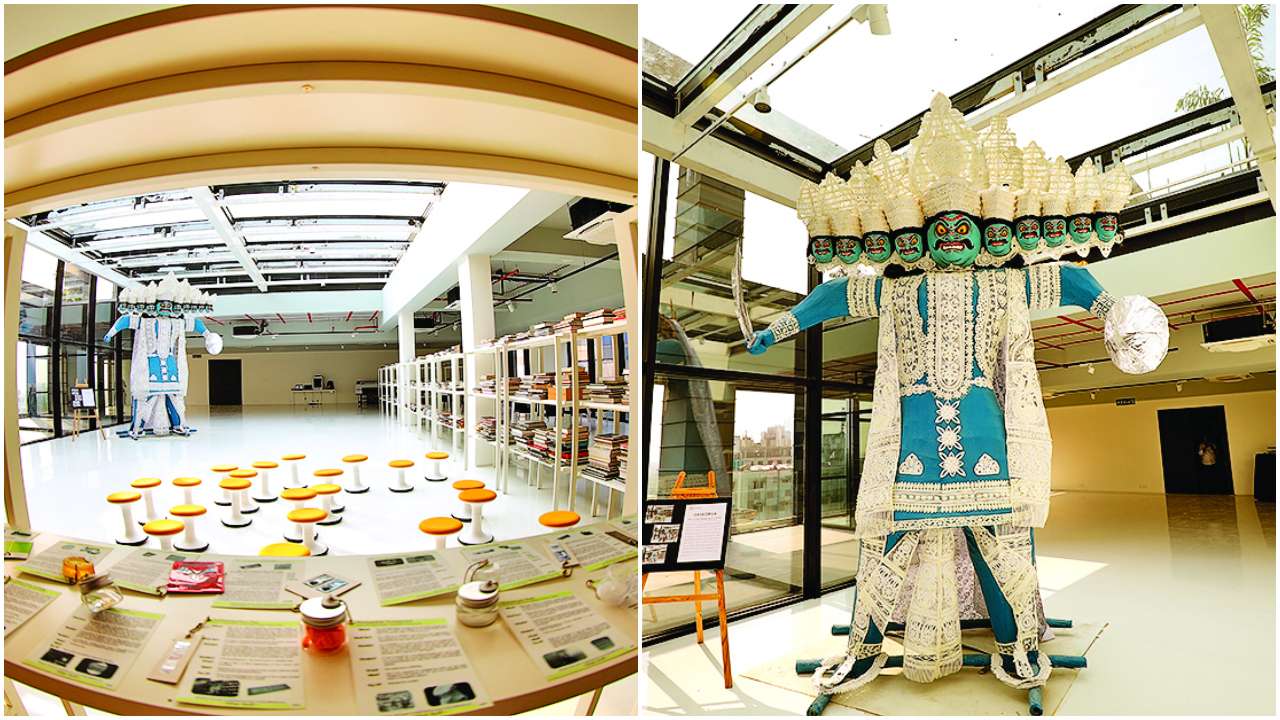
Nassia Inglessis' 'living' sculpture named Disobedience sets the tone for the newly opened Kolkata Centre for Creativity (KCC), an initiative of Emami Art. Installed right at the entrance to the five-storied, 70,000 sq ft space, visitors are invited to walk through the narrow gangway inside what looks like the skeleton but is actually a latticed structure made of strips of recycled plastic mounted on a steel frame. Be warned – it is quite disconcerting, because the 'walls' of the structure move and expand and change shape when you pass, as if you are being swallowed by a force beyond your ken!
Disobedience was the centerpiece at the London Design Biennale held earlier this year, placed prominently in the courtyard of Somerset House, where Pinakin Patel, the architect of the KCC building and the creative brains behind its programme, saw it and picked it up. And going by the reaction of the gathering on opening day and the squeals of those who experienced it, Disobedience will be one of the space's prime attractions.
This is but one instance of how in small ways and big Patel's design thinking has informed the KCC space.
Note the toadstool seats on level five, envisioned as an open to the sky art studio cum maker section, with 3D printers, laser cutters, digital printers and books and 'material' library, with specimens of new age art- and design-making media – anything and everything that a young artist or designer could want to spark his creativity, and then realise it. It looks fairly ordinary but when you sit down you realise that its leg is curved, inviting you to move your hips and twirl your bum!
Under Patel's watch, design is as much part of KCC's DNA as is art – both modern and contemporary. So if the two lower floors are more conventional, white cube 'gallery' spaces – Richa Agarwal, KCC's Executive Director and CEO of Emami Art, announces four exhibitions a year dedicated to art, craft, antiquity and design – the upper floor have modular events spaces and studios on hire with all kinds of modern technological equipment required by performing artistes. The idea, according to Agarwal, is for KCC to be a draw for creative practices of all kinds – artists, designers, craftsmen, collectors, critics, curators, students, and of course, the general public.
The most distinctive feature of Patel's design of the KCC building is the way it allows for natural light to stream inside through the louvred façade. Combined with the pale floors, this creates an illusion of space and draws the eye to the works of art. This is most evident on the first and second floors which are connected via wooden steps which rise into an amphitheatre like space designed for performances and baithaks. This double height space framed by wooden pillars through which the light streams down, over the shoulder of the audiences on the steps, and straight on the performer or speaker addressing them, is the central node of the building.
It's a bold new design for a building and an institution that, in Patel's words, hopes to be a new kind of arts institution, vastly different in its scope and practice from the private museum-mould that corporates have set up so far. Now it's up to the creative practitioners of Kolkata to make the most of it.